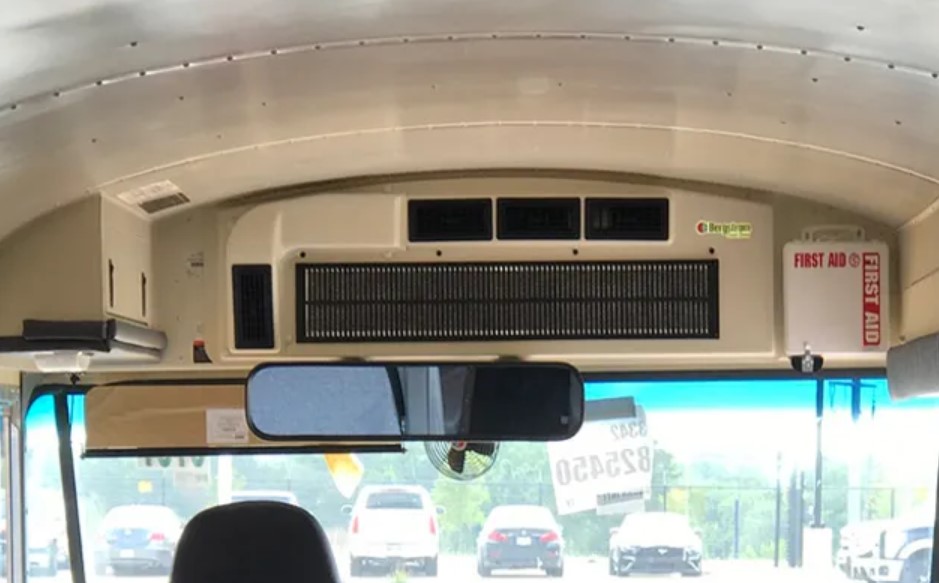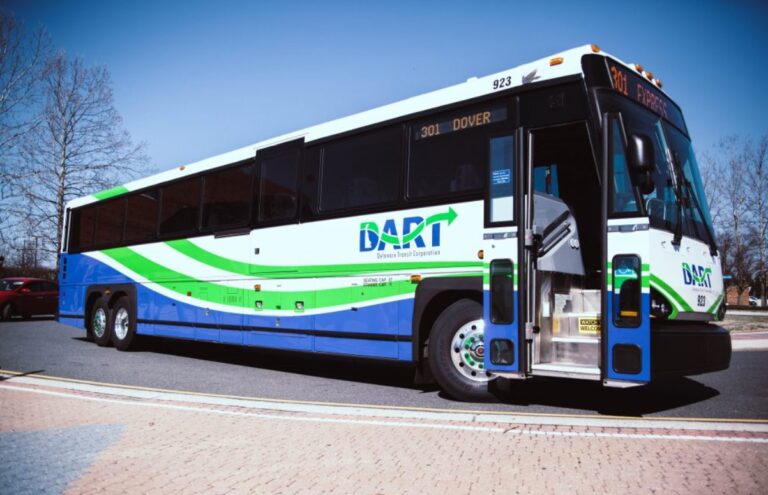How Does Air Conditioning Work In A Bus? Explained
Are you looking for How Does Air Conditioning Work In A Bus? This question intrigues many, as buses are a common mode of transportation globally. Air conditioning systems in buses play a pivotal role in ensuring a comfortable journey for passengers. They are designed to cope with larger interior spaces and varying external temperatures, making their operation different from that of small vehicles.
Key Takeaways
- Air conditioning in buses works through a complex system involving compressors, condensers, and evaporators.
- It regulates temperature, filters the air, and controls humidity for passenger comfort.
- Advanced systems include automated climate control for improved efficiency.
- Maintenance is key for optimal functioning and longevity of the system.
How Does Air Conditioning Work In A Bus?
Air conditioning in a bus works by using a system that includes a compressor, condenser, and evaporator. The compressor compresses a refrigerant gas, increasing its pressure and temperature.
This hot gas then travels to the condenser, where it releases its heat to the outside air and turns into a liquid. Next, the liquid refrigerant moves to the evaporator inside the bus, where it absorbs heat from the interior air, thus cooling it.

The refrigerant then returns to the compressor to repeat the cycle. This process not only cools the air but also removes humidity, providing a comfortable environment for passengers.
Components of a Bus Air Conditioning System
The air conditioning system in a bus consists of several key components, each playing a vital role in temperature regulation.
Compressor
The compressor is the heart of the system. It compresses the refrigerant, which heats it up and sends it to the condenser.
Condenser
Here, the heated refrigerant releases its heat to the outside air, cooling down and transforming into a liquid form.
Evaporator
In the evaporator, the refrigerant absorbs heat from the bus’s interior, effectively cooling the air inside the bus.
These components work in a continuous cycle to maintain the desired temperature inside the bus.
The Refrigeration Cycle
Understanding the refrigeration cycle is key to comprehending how bus air conditioning systems work.
Compression
The compressor increases the pressure and temperature of the refrigerant.
Condensation
In the condenser, the high-temperature refrigerant releases heat and changes into a liquid.
Expansion
The refrigerant then passes through an expansion valve, where its pressure and temperature drop.
Evaporation
Finally, in the evaporator, the refrigerant absorbs heat from the bus interior, thus cooling the air.
This cycle repeats continuously to maintain cooling inside the bus.
Climate Control in Buses
Modern buses are equipped with advanced climate control systems.

Automated Climate Control
These systems automatically adjust the temperature based on internal and external conditions, enhancing passenger comfort.
Air Quality Management
They also include air filters and humidity control features, ensuring a healthy and comfortable environment inside the bus.
Maintenance of Bus Air Conditioning Systems
Regular maintenance is crucial for the efficient functioning of bus air conditioning systems.
Regular Check-ups
Scheduled check-ups prevent breakdowns and ensure the system operates at peak efficiency.
Cleaning and Replacement of Components
Cleaning filters and replacing worn-out parts is essential for maintaining air quality and system performance.
Energy Efficiency and Environmental Impact
The efficiency of bus air conditioning systems has a significant impact on fuel consumption and environmental footprint.
Use of Eco-friendly Refrigerants
Modern systems use refrigerants that are less harmful to the environment.
Energy-efficient Designs
Innovative designs reduce power consumption, thereby lowering emissions and operating costs.
How Do You Control AC On A Bus?
Controlling the air conditioning (AC) on a bus is typically managed by the bus driver or an automated system. In most buses, there’s a central control panel accessible to the driver.

This panel includes controls for adjusting the temperature, fan speed, and sometimes the direction of air vents. Some modern buses are equipped with automated climate control systems that adjust the settings based on internal and external temperature sensors, ensuring consistent comfort without manual intervention.
These systems aim to maintain a preset temperature, taking into account the number of passengers, external weather conditions, and even the time of day. For instance, the AC might be set to a cooler temperature during peak hours when the bus is crowded to offset the additional body heat.
Which Gas Is Used In Bus AC?
The gas used in bus air conditioning systems is typically a refrigerant, which is crucial for the cooling process. Historically, chlorofluorocarbons (CFCs) like R-12 were used, but due to their harmful effects on the ozone layer, they have been phased out.

Modern bus AC systems now commonly use more environmentally friendly refrigerants like R-134a, and newer buses might use R-1234yf or R-744 (carbon dioxide).
These newer refrigerants have a lower Global Warming Potential (GWP) and are less harmful to the environment. The choice of refrigerant depends on the system design, efficiency requirements, and environmental regulations in place.
What Does An AC Bus Do?
An AC bus provides passengers with a controlled and comfortable environment, irrespective of the outside weather conditions. It does this by cooling, filtering, and circulating the air inside the bus.
The cooling function reduces the inside air temperature, making travel in hot weather more comfortable. Additionally, the system filters out pollutants, dust, and allergens, improving the air quality inside the bus.
This is particularly beneficial in urban and industrial areas where air quality can be a concern. Furthermore, the AC system in a bus regulates the humidity levels, which is important in preventing the bus windows from fogging up and ensuring a comfortable environment for passengers.
The presence of an efficient AC system in buses also encourages the use of public transportation, as it assures passengers of a comfortable journey, especially in regions with extreme weather conditions.
Conclusion
To conclude, How does air conditioning work in a bus? This complex yet fascinating system ensures a comfortable and healthy environment for passengers. Its components work in harmony through the refrigeration cycle, with advanced features for climate control and air quality management.
Regular maintenance and energy-efficient designs contribute to its effectiveness and sustainability. Understanding this system’s workings helps us appreciate the technology that makes our bus journeys comfortable.
Frequently Asked Questions
Are there any innovations in bus air conditioning systems?
Recent innovations include the use of solar-powered systems, advanced climate control technologies, and the integration of smart systems for real-time monitoring and adjustments, enhancing efficiency and passenger comfort.
How does the air conditioning system affect the fuel efficiency of a bus?
The use of the air conditioning system increases the load on the bus’s engine, leading to higher fuel consumption. However, newer, more efficient systems minimize this impact.
Do electric or hybrid buses have different air conditioning systems?
Electric and hybrid buses often use air conditioning systems that are specifically designed to be more energy-efficient, minimizing the impact on the vehicle’s battery life and overall energy consumption.
What happens if the air conditioning system in a bus breaks down?
If the system breaks down, it can lead to discomfort due to increased temperatures and humidity inside the bus. In such cases, the system needs to be inspected and repaired by a professional technician.

Welcome to the exhilarating world of Matt Rex, a professional car racer turned renowned vehicle enthusiast. Immerse yourself in his captivating blog as he shares heart-pounding adventures, expert reviews, and valuable insights on cars, trucks, jets, and more. Fuel your passion for speed and discover the beauty of vehicles through Matt’s engaging stories and meticulous expertise. Join the ever-growing community of enthusiasts who find inspiration and expert advice in Matt Rex’s blog—a digital hub where the thrill of speed meets the pursuit of knowledge.







